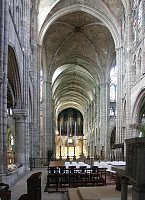
|
The choirIn 1144, the new choir was dedicated in the presence of King Louis VII, Queen Eleanor of Aquitaine, members of the royal court, and numerous distinguished clergy. The choir, conforming in shape to the older crypt below, is generally considered to be the birthplace of Gothic architecture because of the innovative rib vaults resting on pointed arches in both the ambulatory and the chapels. Springing from slender columns in the ambulatory and from thin masonry walls framing the chapels, these light vaults allow for the elimination of the walls between the chapels as well as lessening the need for such weight-bearing outer walls so that they can now be filled with stained glass.
|
| |
|
|
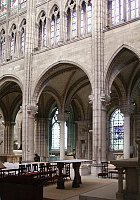
|

|
| |
|

|
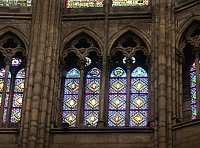
|
|
| |
|
Rib vaulting Easier to construct than the barrel or groin vault, the ribbed vault was also stronger and more flexible. The ribbed vault has crossed or diagonal arches under its groins which form the armature or skeletal framework for constructing the vault. Gothic vaults usually have more thinly vaulted webs between the arches than earlier Romanesque vaults.
|
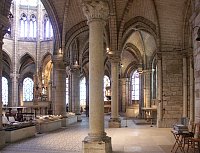
|
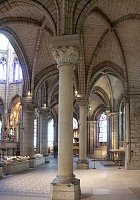
|
| |
|
Elegant monolithic columns support the ribbed vault as if it were weightlessThe great advantage of the ribbed or arched vault is its flexibility which allows for the vaulting of compartments of different shapes. This is important especially in choirs and ambulatories where the aisles curve around the eastern end. |
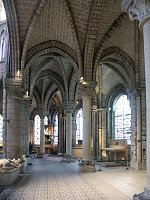
|
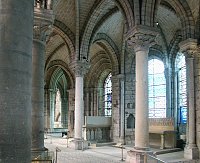
|
Pointed arches also can be different widths to span different areas yet they still have the same height because the pointed arch can be made narrower or wider to fit the width at the base.
|
| |
|
| Pointed arches also direct the weight of the vaults downward more than semicircular vaults do and thus require less buttressing, which also allows for opening up the walls below with large windows. In addition, pointed arches appear taller than semicircular arches because they lead the eye upward. |
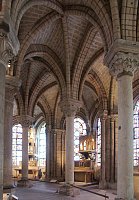
|
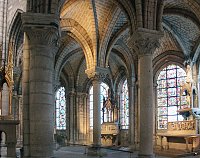
|
| |
|
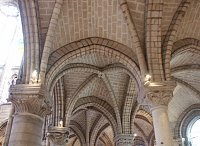
|
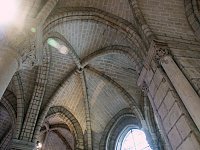
|

|
| |
|

|

|

|
| |
|
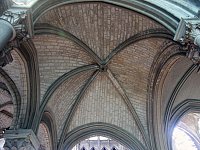
|

|
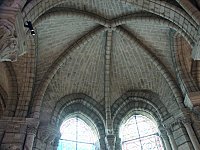 |
| |
|
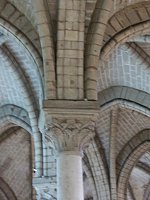
|
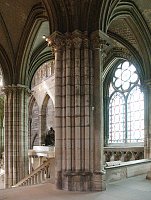
|
|


 Click here to return to index of art historical sites.
Click here to return to index of art historical sites.
 Click here to return to index of artists and architects.
Click here to return to index of artists and architects.
 Click here to return to chronological index.
Click here to return to chronological index.
 Click here to see the home page of Bluffton University.
Click here to see the home page of Bluffton University.

